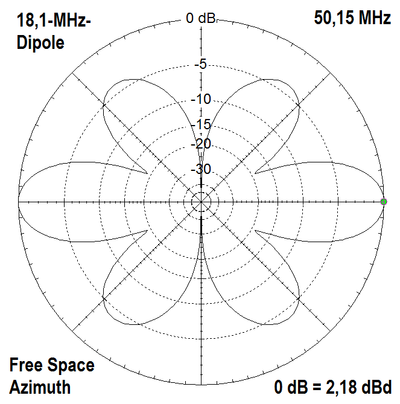 |
 |
|
Fig. 1 |
Fig. 2 |
|
Antenna-Tuner for 50 MHz |
Double-Delta 144 MHz |
|
A lot of hams have no special antenna for the 6-m-Band, but a transceiver which has this band build in without an internal antenna tuner. During ES-openings it is possible to work stations with the first hop all over Europe with simple antennas, in some cases DX can be reached. With a cheap antenna tuner you may work on the magic band! In
principle, wire antennas such as monoband dipoles for different bands,
Windoms, G5RV and W3DZZ for 50MHz can be used. It comes to the aid of
the fact that most baluns (for example those of Fritzel in Germany)
contain toroid material that is specified and usable up to 50MHz. The
same rules are valid for beam- and quad-antennas. The
praxis shows that due to transformation effects on the feeding
coax-cable a SWR of >3, in most cases about 2 can be seen.The used
coax cable should be of better quality, not just RG-58, to minimize the
losses due to a higher SWR. Predictions can hardly be made about the
respective impedance at 50 MHz since these depend very much on the
individual lengths, the height above ground and the ground conditions.
Nevertheless, there is a high probability that a relatively
low-impedance feeding point will be available at the station. With a
simple antenna tuner then an adjustment is possible. As an example the Azimuth pattern of a 18,1-MHz-dipole shows the practicability of such an antenna (Fig. 1). For a W3DZZ I have plotted the expected Azimuth pattern for 50,15 MHz (Fig. 2). The axis of the antenna is 0-180°. Four peaks with a gain of 5 dBd and several others are to be seen. The elevation lobes for a 10 m high W3DZZ as example are not to bad as Fig. 3 shows. |
 |
 |
|
Fig. 1 |
Fig. 2 |

| For years,
I have been using a modified "CB Matcher" antenna tuner (Fig.
4). These cheap and simple parts are very useful for amateur purposes!
They originally contain an air coil with 10 turns. I have installed a
new inductor, it consists of 5 turns CuAg with 1.5 mm thickness with an
inner diameter of 10 mm. Two mica tuning capacitors with a final
capacity of about 120 pF are build in and can withstand more than 100
Watts RF on the 10-m-band. Disadvantage of these capacitors is their
very nonlinear characteristic and the fact that several turns are
tunable. Because of this a scale is useless. But once you have found the
right tuning points, the settings can be retained and a re-tuning is
usually omitted. Fig. 5 shows a view into the converted matchbox, which
is a classic PI- or Collins-filter (Figure 6).
It is of course possible to build your own fitting device. The tuning capacitors used should have 100-150pF capacity. Broadcasting rotary types 2x 300-500 pF are sufficient with the dielectric strength, if two disk packs are connected in series. This halves the capacity and doubles the voltage they can withstand. |
 |
 |
 |